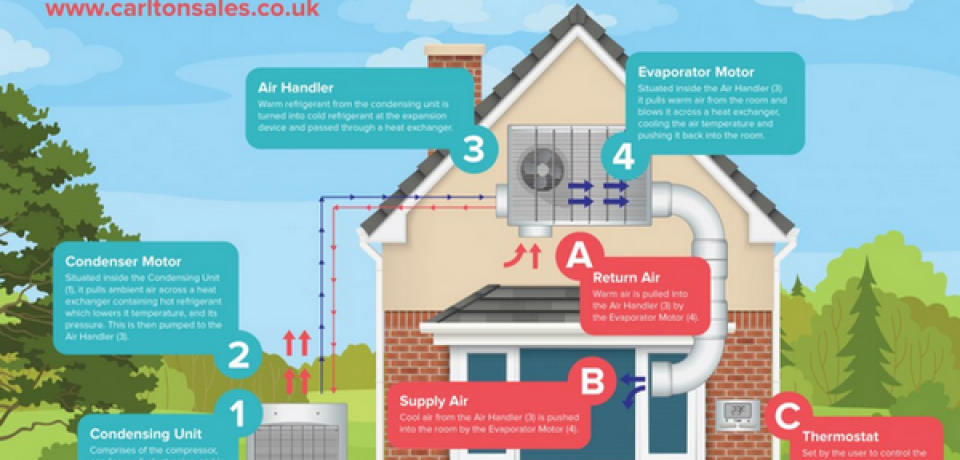The Ultimate Overview To Recognizing Warm Pumps - How Do They Work?
The Ultimate Overview To Recognizing Warm Pumps - How Do They Work?
Blog Article
Created By-Hoppe Dickson
The most effective heatpump can save you substantial quantities of money on energy bills. They can additionally help reduce greenhouse gas exhausts, particularly if you use electrical energy instead of nonrenewable fuel sources like propane and home heating oil or electric-resistance heaters.
clicking here as ac unit do. This makes them a viable choice to standard electrical home heating unit.
Exactly how They Work
Heat pumps cool homes in the summer season and, with a little assistance from electrical energy or natural gas, they offer several of your home's heating in the winter season. They're a good option for individuals who want to reduce their use of nonrenewable fuel sources yet aren't all set to replace their existing heater and a/c system.
They count on the physical fact that also in air that seems as well cold, there's still power existing: warm air is always moving, and it intends to move right into cooler, lower-pressure environments like your home.
Most power celebrity licensed heat pumps run at near their heating or cooling ability throughout most of the year, lessening on/off cycling and saving energy. For the very best efficiency, concentrate on systems with a high SEER and HSPF score.
The Compressor
The heart of the heat pump is the compressor, which is likewise known as an air compressor. This mechanical streaming tool uses potential power from power creation to boost the pressure of a gas by reducing its quantity. It is various from a pump in that it only deals with gases and can not deal with liquids, as pumps do.
Climatic air enters the compressor via an inlet shutoff. It circumnavigates vane-mounted arms with self-adjusting size that split the interior of the compressor, producing numerous dental caries of varying size. https://costtoaddairconditioning90009.blogolenta.com/26212681/making-best-use-of-convenience-and-cost-savings-tips-for-optimizing-your-heat-pump-efficiency to move in and out of stage with each other, compressing the air.
The compressor pulls in the low-temperature, high-pressure refrigerant vapor from the evaporator and compresses it right into the warm, pressurized state of a gas. This procedure is repeated as required to supply heating or air conditioning as needed. The compressor likewise consists of a desuperheater coil that reuses the waste warmth and adds superheat to the cooling agent, transforming it from its fluid to vapor state.
The Evaporator
The evaporator in heatpump does the same thing as it does in fridges and air conditioners, altering fluid refrigerant right into an aeriform vapor that gets rid of warm from the room. Heat pump systems would certainly not work without this important tool.
This part of the system lies inside your home or building in an interior air trainer, which can be either a ducted or ductless system. It includes an evaporator coil and the compressor that presses the low-pressure vapor from the evaporator to high pressure gas.
Heatpump absorb ambient warmth from the air, and after that use electrical energy to move that warm to a home or service in heating mode. That makes them a whole lot extra energy reliable than electric heaters or heating systems, and due to the fact that they're utilizing clean electricity from the grid (and not shedding gas), they likewise create much fewer emissions. That's why heatpump are such wonderful ecological selections. (As well as a substantial reason they're becoming so preferred.).
The Thermostat.
Heat pumps are fantastic alternatives for homes in chilly climates, and you can utilize them in combination with conventional duct-based systems or even go ductless. They're a terrific different to nonrenewable fuel source heater or conventional electric heating systems, and they're much more lasting than oil, gas or nuclear a/c equipment.
Your thermostat is the most essential part of your heatpump system, and it functions really differently than a traditional thermostat. All mechanical thermostats (all non-electronic ones) work by using compounds that change dimension with enhancing temperature, like coiled bimetallic strips or the broadening wax in a cars and truck radiator shutoff.
These strips consist of 2 different types of steel, and they're bolted with each other to create a bridge that completes an electric circuit connected to your a/c system. As the strip obtains warmer, one side of the bridge expands faster than the other, which triggers it to bend and signify that the heating unit is required. When the heatpump remains in home heating mode, the reversing shutoff turns around the flow of refrigerant, to make sure that the outdoors coil currently operates as an evaporator and the indoor cylinder comes to be a condenser.